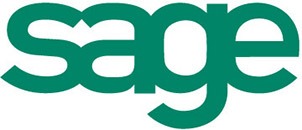The latest figures show that UK inflation eased slightly in December, falling to 2.5% from 2.6% in November.
Although the drop is marginal, it has sparked debate in the media about whether this easing of inflation could lead the Bank of England to consider cutting interest rates when it meets next month. At the same time, there is speculation that many businesses may raise prices in the coming months due to payroll cost increases scheduled for April.
Here, we examine the key issues you need to be aware of.
Could interest rate cuts provide relief for borrowers?
The decline in inflation raises the possibility of further interest rate cuts. For those with existing loans or plans to borrow for expansion, a reduction in interest rates could mean lower financing costs and improved cash flow.
It’s worth noting that lenders may reduce their rates even before an interest rate cut is formally announced. Confidence in financial markets about future rate movements can work in your favour.
However, it’s important to remain cautious. Any rate cuts remain speculative at this stage and depend on upcoming economic data. The Bank of England has already demonstrated a measured approach to reducing rates, and inflation remains above its 2% target.
Preparing for multiple scenarios is essential, and seeking professional advice could help you strategically manage your business’s debt.
Cost pressures to rise in April
While lower inflation is a welcome development, rising costs remain a significant challenge for 2025, particularly regarding payroll.
The National Living Wage and National Minimum Wage will increase in April, directly affecting payroll costs, especially for businesses in the hospitality, retail, and care sectors.
Moreover, employers face added cost pressures from the increased Employer National Insurance Contributions rate and a reduced threshold, which could further squeeze profit margins.
For businesses already dealing with tight margins, these changes could create significant financial strain. Now is the time to evaluate your cost structures, consider adjustments to pricing strategies, enhance efficiency, and explore ways to maintain competitiveness.
Key considerations for business owners
- Cash flow management: With changing costs, accurate cash flow forecasting is critical to ensure your business meets its financial obligations while planning for the future.
- Pricing strategy: Adjusting prices to address rising costs requires careful planning. Passing costs onto customers can be delicate, but strategic pricing decisions can minimise negative impacts.
- Efficiency improvements: Investing in technology or streamlining operations can help offset rising costs. For example, automation tools can reduce administrative expenses and improve productivity.
- Workforce planning: Prepare for the financial implications of wage increases by calculating their impact on your payroll. Reviewing your staffing needs can also identify potential cost-saving opportunities.
Plan ahead to navigate challenges
While the easing of inflation is positive news, businesses must remain vigilant. With wage increases and higher employer contributions on the horizon, proactive planning and preparation are essential.
If you need support with financial planning, cash flow forecasting, cost management, efficiency reviews, wage planning, or advice on tax and national insurance, get in touch with us. Working together, we can provide the insights and strategies you need to confidently navigate these changes and position your business for long-term success.









